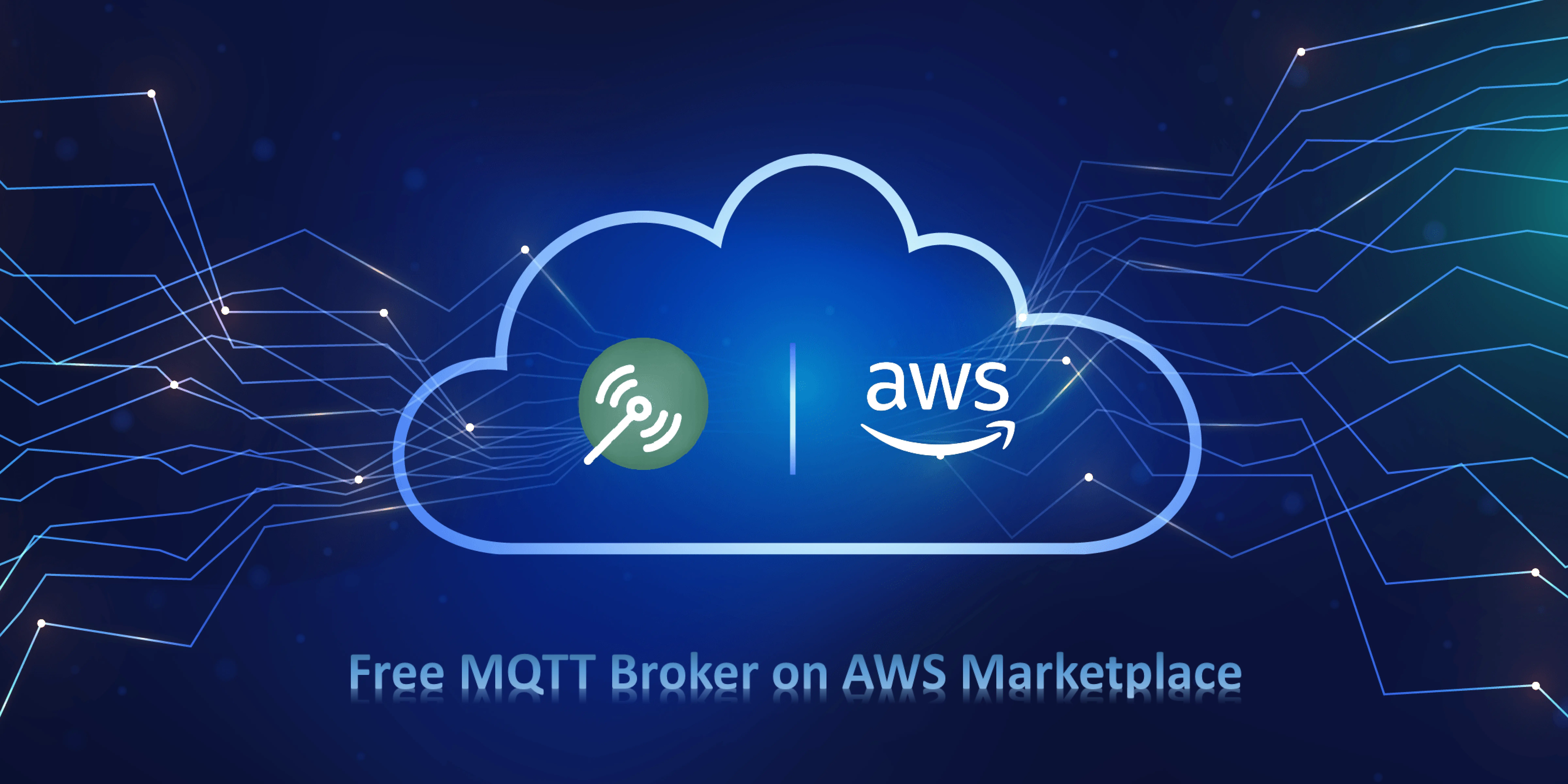Enhancing Scalability with AWS MQTT Broker Integration
by Ponlakshmi | Sep 28, 2023 | MQTT Broker | 0 comments
MQTTRoute is always known
for its extendability and scalability. And now we want to make this
fully functional MQTT Broker completely available and easily accessible for all users. Hence we are
launching the
FREE version of MQTT Broker in
AWS Marketplace where you can quickly deploy
MQTT Broker on
AWS EC2 using pre-made AMIs.
Bevywise MQTT Broker on AWS
In the current period, the whole world is getting filled with
MQTT based devices. While developing IoT
applications, it is
always needed to have a messaging broker / server which should act as a middleware between your MQTT / IoT
enabled devices.
Hence, a reliable & well-built MQTT broker is a key part of every IoT applications & projects but setting
one up, managing,
monitoring and debugging is a complex one and time-consuming. Also, though there are numerous commercial
MQTT Brokers available in the market like Mosquitto, HiveMQ and so on, early adopters & small project
developers
cannot afford them as they will end up paying more. So we are enabling the AWS version of the MQTTRoute
for 25 devices
FREE with the
IoT mobile application.
As we have created pre-built AMIs, our MQTT
Broker
version is available for quick deployment on
AWS
EC2.
An AWS EC2 instance of Bevywise MQTT broker with the size of your choice would be quickly
launched and easily installed on your AWS account. With the FREE version on AWS, we are aiming to make
everyone take
advantage of their IoT core application development.
This version will be beneficial to build any sort of IoT applications and people could get it ready in
their budget.
Product Overview :
- Multiple dashboard customization options, live widgets, device listing, device logs, sample client
code,
Sys topic to examine specific connected device details,
and secure login to access the user interface are all available in the customizable user interface.
- A built-in rule engine can automate device activities and provide conditional warnings based on the
payload
it has received.
- Powerful extensions allow users to write their own code to develop their own applications more quickly
and easily.
These extensions include custom storage, custom data store, custom scheduler, custom UI server, and
custom authentication.
Please refer our
Python document
for more information.
- REST API to link your mobile applications and connect the broker to the user's online applications.
- Supports a variety of
customizable security options, including device-level, remote level,
and
TLS/SSL
authentication,
as well as X.506 authentication.
- MQTT data is typically stored in
SQLite. Additionally
offers
flexible storage choices for data to be
stored in Elastic
search,
MySQL,
MSSQL,
PostgreSQL,
or any other big data engines.
- Using the custom store functionality, any data visualisation tool and big data engine may be easily
integrated.
Please refer our IoT data
storage page
to see our already-built integration.
- Acceptance of all languages - Any language can be used for the user interface.
What can you expect?
- Completely unrestricted in terms of functionality.
- Device connections can be made for about 25 devices.
- SQLite is the standard MQTT storage option. SQLite is only effective for smaller data sets.
You can then set up data in
MySQL,
Elastic, or any
other large data engines.
- Email help with a 48-hour turnaround time.
Quick steps for starting MQTT Broker
- Choose the location where you want to install your free MQTT message broker instance.
- It is important to choose a size that is appropriate for your EC2 instance and to establish the
instance's settings.
- Assemble a storage arrangement.
- Make your Route instance accessible to your Clients by opening ports 1883, 80, and 8081 in the
security group.
- Create an AMI and use your browser to go to
- You can access the interface via http://<yourinstanceip>/ by
utilizing the user credentials admin/admin.
Modifying the MQTT Broker's database:
- Enter the URL of your EC2 instance.
- Choose SSH client after clicking "Connect" to continue.
- Subsequent to the example, copy the SSH for pem file.
- Then execute the SSH command at the terminal.
- You will obtain server access in order to modify the DB in the pem file.
- Make your way to opt/Bevywise/MQTTRoute/conf.
- Change the DB_SERVER = MYSQL / MSSQL / POSTGRES setting in the conf file.
- Next, enter your root password for MySQL, MSSQL, or POSTGRES. For instance, in MySQL_PASSWORD = your
root password
Your selected DB will now preserve your MQTT data.
Get started with your IoT implementation by utilizing the
FREE MQTT Broker on AWS Marketplace.
